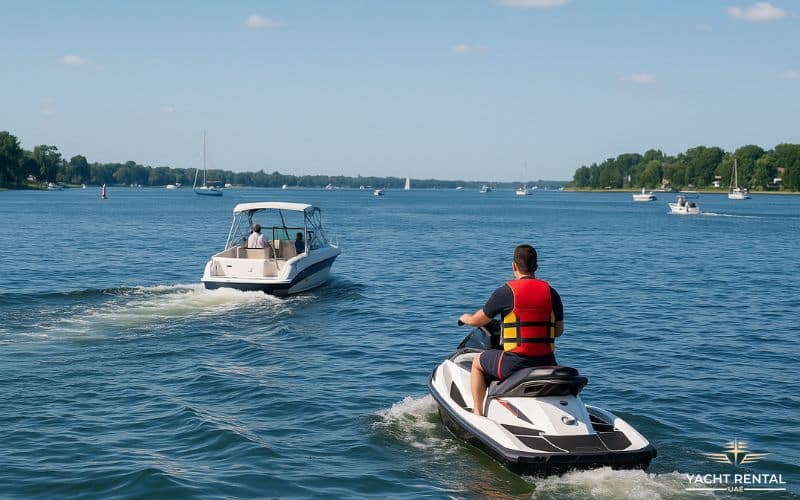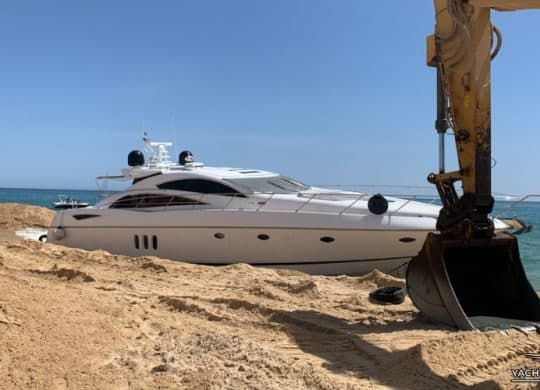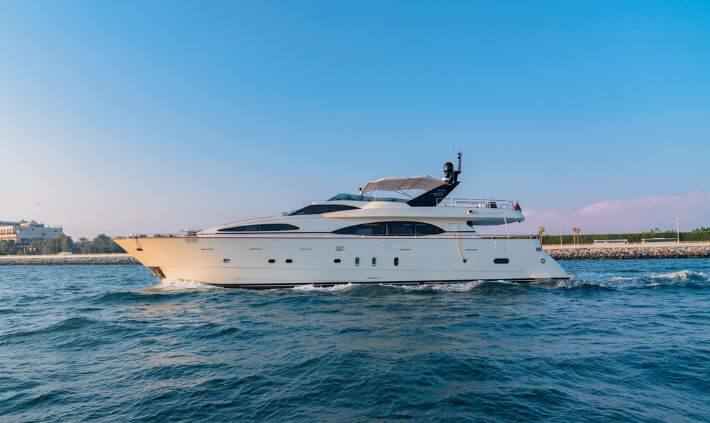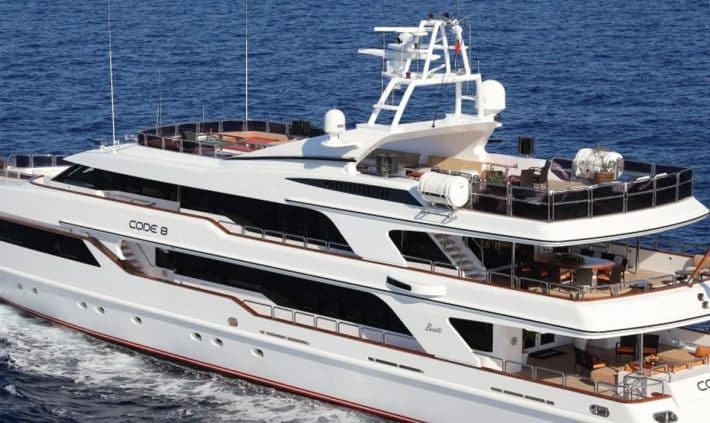Primary Collision Risks
Operating a PWC too closely behind another vessel creates significant collision hazards that endanger everyone involved. When a PWC follows a boat with minimal distance between them, the operator faces a dangerous situation should the leading vessel suddenly slow down, stop, or make an unexpected turn. The limited reaction time in such scenarios often results in the PWC crashing directly into the boat ahead.
PWC operators must recognize that larger vessels frequently make unpredictable maneuvers, especially in busy waterways. The boat operator ahead might not even realize a PWC follows closely behind due to engine noise and limited rear visibility. Such situations create perfect conditions for potentially catastrophic collisions.
In addition, PWCs lack the protective barriers found on conventional boats. The exposed position of riders means collision impacts transfer directly to their bodies rather than being absorbed by a hull structure. Most PWC fatalities result from collision injuries rather than drowning, highlighting how dangerous these impacts can be.
Wake-Related Hazards
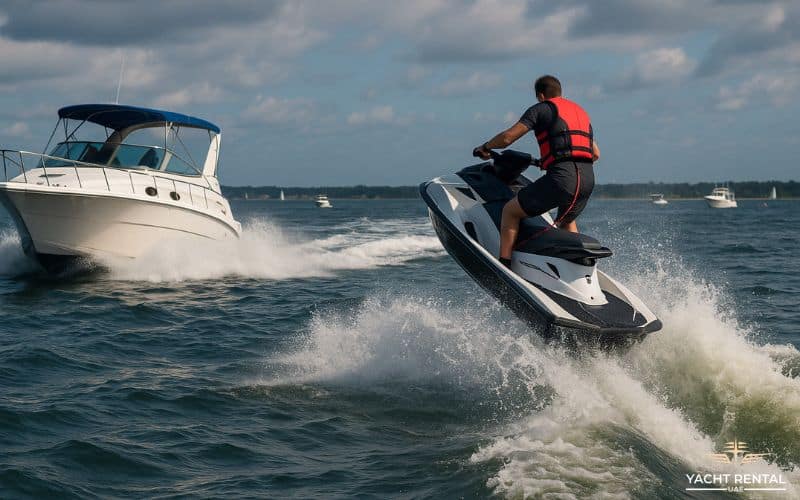
The wake created by boats presents another substantial risk factor when a PWC follows too closely. Boats, especially larger vessels, generate significant wakes that can destabilize a PWC attempting to navigate through them at close range.
When encountering a wake at an improper distance or angle, PWC operators may lose control of their craft. The sudden impact can cause the PWC to become unstable, potentially capsizing the watercraft or ejecting the rider into the water.
Once thrown from the PWC, riders face additional dangers from other watercraft in the vicinity that might not see them in time to avoid collision. Wake jumping, though sometimes practiced as a recreational activity, becomes particularly dangerous when performed too close to the generating vessel. The unpredictable nature of wakes combined with limited control during jumps creates a serious safety hazard for both the PWC operator and nearby vessels.
Visibility and Blind Spot Complications
Passing too closely behind another boat significantly reduces visibility for the PWC operator. The boat ahead effectively creates a blind spot that obscures the view of oncoming water traffic, potential obstacles, and changing water conditions.
Limited visibility prevents the PWC operator from making informed navigation decisions. Without a clear view of approaching vessels or obstacles, operators cannot properly apply navigation rules or take evasive action when necessary. The compromised visibility essentially forces the PWC operator to react to situations after they become dangerous rather than avoiding them proactively.
For the boat being followed, the PWC might remain in their blind spot, making the boat operator unaware of the PWC’s presence. Many accidents occur because boat operators make turns or maneuvers without realizing a PWC following closely behind.
Propeller Injury Dangers

One of the most severe risks associated with following too closely involves propeller injuries. If collision or wake impact causes a PWC rider to fall into the water near the boat ahead, the person faces potential contact with the boat’s propeller.
Propeller injuries tend to be extremely serious and often life-threatening. The spinning blades can cause deep lacerations, amputations, or fatal injuries. The danger increases substantially in situations where the boat operator remains unaware that someone has fallen into the water nearby.
The risk of propeller injuries emphasizes why maintaining adequate distance proves essential for PWC operation. Safety guidelines recommend keeping PWCs and towed persons at least 30 meters from other vessels whenever possible to minimize these dangers.
Also Read: When is a Boat Operator Required to Assist Anyone Injured in an Accident
Factors That Amplify Risk
Several factors can increase the dangers associated with following too closely behind another vessel on a PWC. Understanding these amplifying elements helps operators better assess and mitigate potential hazards.
Speed and Maneuverability
Issues PWCs can reach high speeds quickly, a characteristic that contributes to their popularity but also increases risk potential. At higher speeds, reaction times decrease while stopping distances increase. The combination makes collision avoidance more difficult when following another vessel too closely.
Despite their high maneuverability, PWCs require sufficient space and time to execute emergency maneuvers safely. Following too closely eliminates this safety margin. Even experienced operators cannot overcome the physics of momentum and stopping distance when insufficient space exists between vessels.
Speed amplifies all other risk factors, including wake impact severity and collision damage. Many jurisdictions impose speed restrictions in certain areas specifically to address these dangers.
Operator Inexperience Complications
Many PWC accidents involve operators with limited experience. Rental situations particularly contribute to this problem, with operators sometimes receiving minimal instruction before heading out on the water.
Inexperienced operators often misjudge safe following distances and fail to anticipate how boats might maneuver. Their limited understanding of navigation rules further compounds the risks associated with close following.
The combination of powerful watercraft and inexperience creates dangerous situations on waterways. Proper training and education represent essential components of PWC safety, helping operators understand why maintaining safe distances from other vessels remains crucial.
Environmental Condition Factors
Water and weather conditions significantly impact the safe operation of PWCs. Wind, currents, and waves affect maneuverability and can push vessels closer together than intended. These natural forces make maintaining safe distances more challenging in adverse conditions.
Reduced visibility from rain, fog, or glare further compounds the dangers of following too closely. During periods of limited visibility, safe operation requires even greater distances between vessels to allow adequate reaction time.
Water depth changes and submerged objects present additional hazards that might require sudden maneuvers by the leading boat. PWC operators following too closely may not have sufficient time or space to react to these emergency maneuvers.
Essential Safety Practices
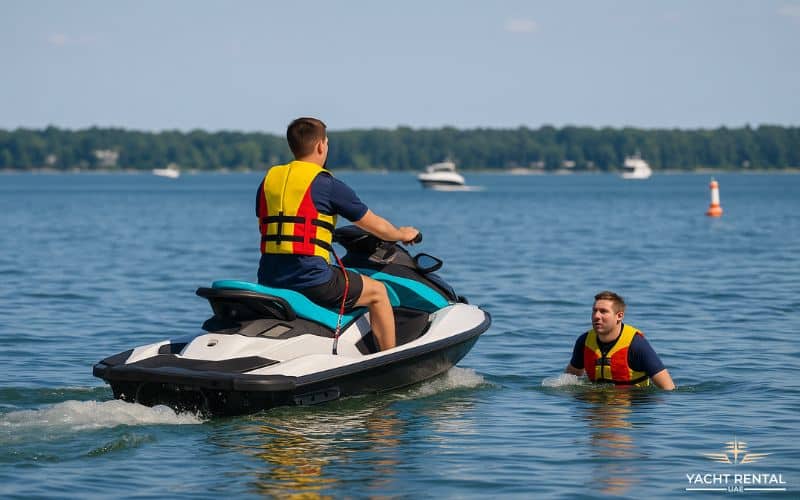
Preventing accidents related to following too closely behind boats requires adherence to established safety practices and regulations. These guidelines help ensure all waterway users can enjoy their activities safely.
Maintaining Safe Distances
PWC operators should maintain a substantial distance behind other vessels. Many jurisdictions recommend keeping at least 30 meters (approximately 100 feet) away from other boats whenever possible.
When approaching or passing another vessel, PWC operators should do so at a safe speed that allows for proper control and emergency maneuvers if needed. Reduced speed provides more reaction time and lessens potential impact severity if a collision occurs.
In congested waterways, extra caution and increased following distances become even more important. Operators should remain especially vigilant in areas with high boat traffic and remember that other vessels might make unexpected maneuvers.
Navigation Rules and Awareness
PWC operators must follow the same navigation rules that apply to all watercraft. These include proper meeting, crossing, and overtaking procedures that help prevent collisions.
Maintaining constant awareness of surroundings represents a critical safety practice. PWC operators should regularly check over both shoulders before making turns or changing direction to ensure no vessels follow too closely behind.
Looking beyond the immediate area helps operators anticipate potential hazards. Focusing solely on the short distance ahead creates tunnel vision that prevents recognizing developing dangerous situations in time to avoid them.
Safety Equipment and Preparation
Always wearing a properly fitted, Coast Guard-approved life jacket, which are personal flotation devices, provides essential protection for PWC operators. Life jackets improve survival chances if ejected from the PWC during a collision or wake impact.
Using the kill switch lanyard ensures the PWC engine stops immediately if the operator falls off. This important safety feature prevents the PWC from continuing under power without control, potentially causing additional accidents.
Proper preparation includes checking equipment before operation, understanding local regulations, and monitoring weather conditions. Being proactive about safety significantly reduces accident risks.
Final Words
The risks associated with operating a PWC too closely behind another boat include potential collisions, wake-related accidents, visibility limitations, and propeller injuries. These dangers increase with factors like excessive speed, operator inexperience, and challenging environmental conditions.
PWC operators can minimize these risks by maintaining safe distances from other vessels, following established navigation rules, staying aware of their surroundings, and utilizing proper safety equipment. Understanding and respecting the inherent dangers of close following helps ensure enjoyable and safe waterway experiences for everyone.
Remember that PWC operation carries the same responsibilities as operating any other motorboat. By practicing responsible navigation and prioritizing safety, PWC riders can significantly reduce accident risks while enjoying their time on the water.

